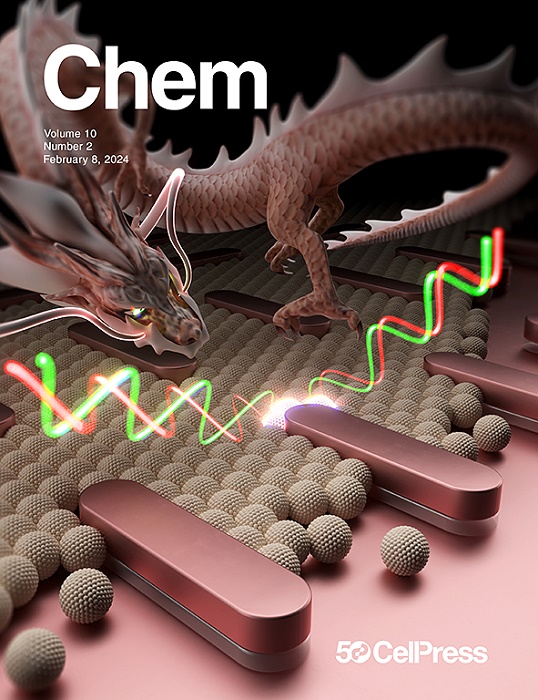Confinement-intensified multi-heavy-atom effect in a tetrahedral iodine cage enables unprecedented capture of trace xenon and krypton
IF 19.1
1区 化学
Q1 CHEMISTRY, MULTIDISCIPLINARY
引用次数: 0
Abstract
The disposal of radioactive xenon and krypton generated by nuclear fission is essential for the zero emission of nuclear energy, while their efficient capture at low concentrations remains a daunting challenge. We present here a design philosophy for noble gas uptake by introducing the concept of the confinement-intensified multi-heavy-atom effect derived from the Lennard-Jones 12–6 potential, which is achieved by the construction of a previously unnoticed structural unit of a tetrahedral halogen cage arranged in a metal-organic framework (Cu(idc-I)). Record-high adsorption capacities of 128.58 and 20.83 cm3 cm−3 for Xe and Kr, respectively, were achieved at 0.1 bar and ambient temperature, along with the highest Kr Henry coefficient (10.19 mmol cm−3 bar−1). The dense tandem-arrayed tetrahedral iodine cages, as powerful binding sites have been visualized by in situ single-crystal X-ray diffraction studies and theoretical simulations, endowing Cu(idc-I) with the ability to effectively capture trace Xe and Kr from mimic nuclear reprocessing off-gas.

四面体碘笼中囚禁强化多重原子效应实现了前所未有的痕量氙和氪捕获
核裂变产生的放射性氙和氪的处理对核能零排放至关重要,而低浓度的有效捕获仍然是一项艰巨的挑战。本文提出了一种惰性气体吸收的设计理念,通过引入由Lennard-Jones 12-6势衍生的约束强化多重原子效应的概念,该效应是通过构建一个以前未注意到的排列在金属有机框架(Cu(dc- i))中的四面体卤素笼的结构单元来实现的。在0.1 bar和环境温度下,对Xe和Kr的吸附量分别达到了创纪录的128.58和20.83 cm3 cm−3,同时Kr Henry系数最高(10.19 mmol cm−3 bar−1)。通过原位单晶x射线衍射研究和理论模拟,发现密集的串列四边形碘笼作为强大的结合位点,使Cu(idc-I)具有从模拟核后处理废气中有效捕获痕量Xe和Kr的能力。
本文章由计算机程序翻译,如有差异,请以英文原文为准。
求助全文
约1分钟内获得全文
求助全文
来源期刊

Chem
Environmental Science-Environmental Chemistry
CiteScore
32.40
自引率
1.30%
发文量
281
期刊介绍:
Chem, affiliated with Cell as its sister journal, serves as a platform for groundbreaking research and illustrates how fundamental inquiries in chemistry and its related fields can contribute to addressing future global challenges. It was established in 2016, and is currently edited by Robert Eagling.
 求助内容:
求助内容: 应助结果提醒方式:
应助结果提醒方式:


